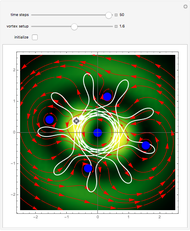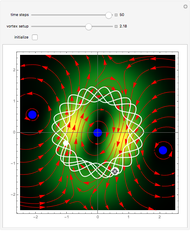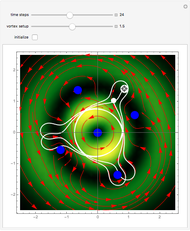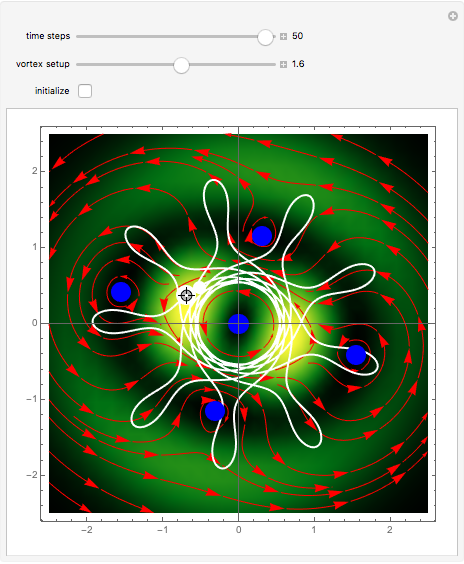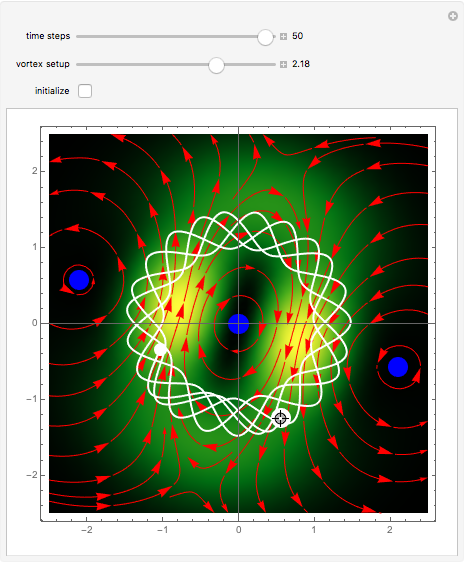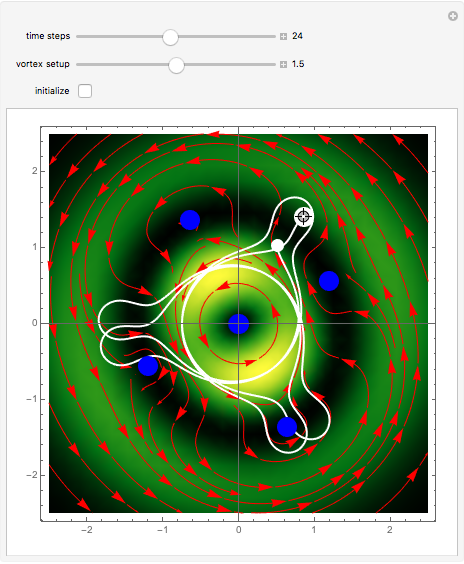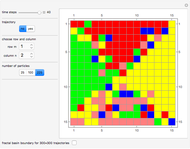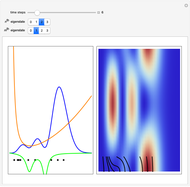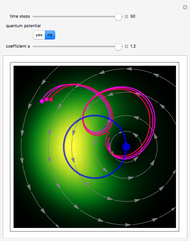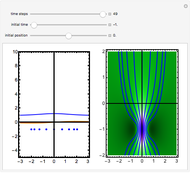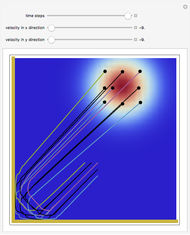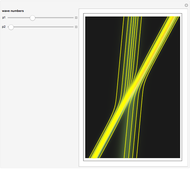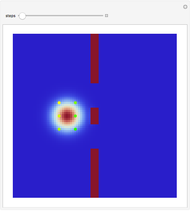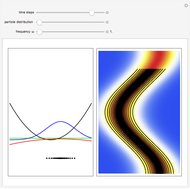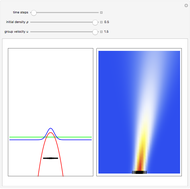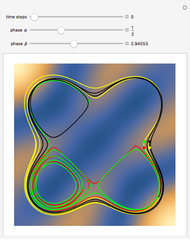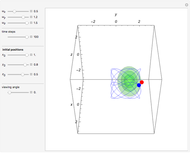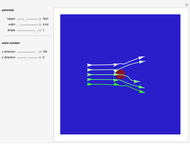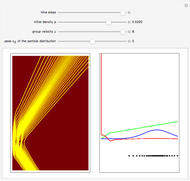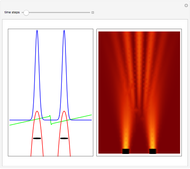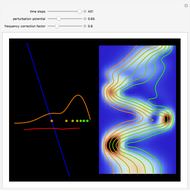Nodal Points in Bohmian Mechanics

Requires a Wolfram Notebook System
Interact on desktop, mobile and cloud with the free Wolfram Player or other Wolfram Language products.
Moving vortices or nodal points play an important role in testing the attributes of quantum motion in the framework of the de Broglie–Bohm trajectory method [2]. This Demonstration studies an unnormalized superposed wavefunction for the two-dimensional harmonic oscillator. Chaos emerges from the sequential interaction between the quantum path with the moving nodal points, depending on the distance and the frequencies between the quantum particles and their initial positions. Here, chaotic motion means the exponential divergence of initially neighboring trajectories (see Related Links below). Vortices are readily formed in several different scenarios, including the superposition of quantum states [1, 2]. Although the initial quantum state contains only one or three nodal points, depending on the  value, during the time evolution new vortices are created and annihilated, so that at certain times there are at most five vortices present. If
value, during the time evolution new vortices are created and annihilated, so that at certain times there are at most five vortices present. If  , there is a nodal region and the squared wavefunction becomes time-independent. In the vicinity of the vortices, the velocity vector field becomes circular and the trajectory is very unstable. The trajectories of the vortices are periodic. The Bohmian trajectory forms periodic, quasi-periodic, or chaotic curves while interacting with the nodal points. The graphic shows the trajectory (white), the velocity vector field (red), the nodal points (blue), the absolute wavefunction, and the initial and end point (white) of the trajectory. You can return to the original settings with the "initialize" checkbox.
, there is a nodal region and the squared wavefunction becomes time-independent. In the vicinity of the vortices, the velocity vector field becomes circular and the trajectory is very unstable. The trajectories of the vortices are periodic. The Bohmian trajectory forms periodic, quasi-periodic, or chaotic curves while interacting with the nodal points. The graphic shows the trajectory (white), the velocity vector field (red), the nodal points (blue), the absolute wavefunction, and the initial and end point (white) of the trajectory. You can return to the original settings with the "initialize" checkbox.
Contributed by: Klaus von Bloh (February 2014)
Open content licensed under CC BY-NC-SA
Snapshots
Details
The unnormalized wavefunction 
satisfies the Schrödinger equation and is taken from [1]:
 ,
,
with  ,
,  , and so on. The velocity is deduced from the total phase of the wavefunction in the eikonal form [3]. For
, and so on. The velocity is deduced from the total phase of the wavefunction in the eikonal form [3]. For  , there exists an analytic solution. The corresponding autonomous differential equation system (velocity field) derived from the phase of the total wavefunction is
, there exists an analytic solution. The corresponding autonomous differential equation system (velocity field) derived from the phase of the total wavefunction is
 (in the
(in the  direction) and
direction) and  (in the
(in the  direction), which can be integrated analytically with respect to time to yield the motion in the
direction), which can be integrated analytically with respect to time to yield the motion in the  -
- configuration space, which leads, with integration constants
configuration space, which leads, with integration constants  and
and  to
to


and
 .
.
References
[1] A. Klein, D. Jaksch, Y. Zhang, and W. Bao, "Dynamics of Vortices in Weakly Interacting Bose-Einstein Condensates," Physical Review A, 76(4), 2009 pp. 043602–1-043602-7. doi:10.1103/PHYSREVA.76.043602; arXiv: 0709.2132v1 [quant-ph].
[2] C. Efthymiopoulos, C. Kalapotharakos, and G. Contopoulos, "Origin of Chaos near Critical Points of the Quantum Flow," Physical Review E, 79, 2009 pp. 036203–1–036203–18. doi:10.1103/PhysRevE.79.036203; arXiv:0903.2655 [quant-ph].
[3] P. Holland, The Quantum Theory of Motion, Cambridge: Cambridge University Press, 1993.
Permanent Citation
